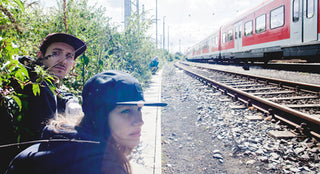In 2010, to avoid further legal problems, UTAH and ETHER decided to move to Asia, where they traveled and painted most of the metro systems on Earth’s largest continent. “Constantly moving and never really settling in one place is just the best way for us to live how we want and accomplish what we want,” the couple explains. “We acknowledge that our lifestyle is certainly not for everyone, but it allows us the freedom to do what we want artistically, which is the most important thing for us right now.”
Their nomadic lifestyle came with a unique set of challenges—for example, when the couple arrived in China, they spent hours walking around a crowded market with a pen drawing of a bolt cutter and headlamp as their only form of communication. The couple also had to figure out how to paint each system and spot (bypassing sensors, avoiding cameras and security, etc.), without the help of local writers or inside information.
But the couple revels in challenges like this: “The accomplishment of traveling and painting the way we do doesn’t come from collecting metro systems like trophies or having another photo for our album,” they explain. “It comes from having our own experiences, both good and bad. In our opinion, a perfect photo of a perfect panel is utterly meaningless if it’s something that’s handed to us instead of something we worked for.”
Case in point: Their most recent zine release, Finish InterRail, documents a European trip gone awry. Their original plan was to chronicle their travels across all of Europe, but the “trip turned into a total disaster on the first day,” and so the couple ended up heading to Marseille to regroup. Despite the fact that their plans veered completely off course, UTAH and ETHER made the most of the trip, resulting in a 120-page zine that documents their unique experiences in a meaningful way. “We felt that the idea of this InterRail-gone-wrong-gone-right-again was more interesting and honest than the perfect spraycation we had originally set out on,” UTAH and ETHER discuss in the following exclusive interview, along with their obsession with trains, how their art exhibitions challenge conventional viewpoints on graffiti, and their best piece of advice.
ZIO: How did you guys meet? Did you guys have an equal obsession with trains, or did one of you get the other one hooked?
UTAH & ETHER: We met back in 2005 through someone who was a mutual friend at the time. There was a plan for a group of us to go on a road trip together to St. Louis to paint the light-rail, and the mutual friend had to back out at the last minute due to some work-related commitments. So we traveled together and kept in touch afterwards, and everything just went from there. We each had our own interest in graffiti and trains before meeting, and were both quite active and had made names for ourselves in our own cities (New York and Chicago), so it was only natural that when we linked up, we shared our common interests with each other.
When and why did you decide to move overseas? You guys have been nomadic for a few years now, so where do you consider “home”?
Due to our colorful legal background, we decided to leave America. At a certain point, it became apparent that staying in the U.S. and continuing to paint and live as we had become accustomed to was just not a viable reality. So we decided to move to Asia, as we saw it as a kind of “uncharted territory” at the time. This was before the recent trend of Asia as a graffiti destination. A few years ago, most Asian cities didn’t really have any sort of “graffiti scene,” which was nice for us. Also at this time, many metro systems in Asia had never been painted, which was definitely appealing. So we resided in Asia for almost three years, mainly traveling and painting. In that time, we painted most of the metro systems on the continent and visited almost all of the major cities. At the end of 2013, we decided it was time for a change, as we’d been in Asia for a while by then, and were starting to feel a bit restless. Europe was a somewhat obvious choice for us, as we have quite a few good friends out here. Also, with so many countries in such close proximity to one another, it’s fairly easy to travel, paint a lot and stay active out here.
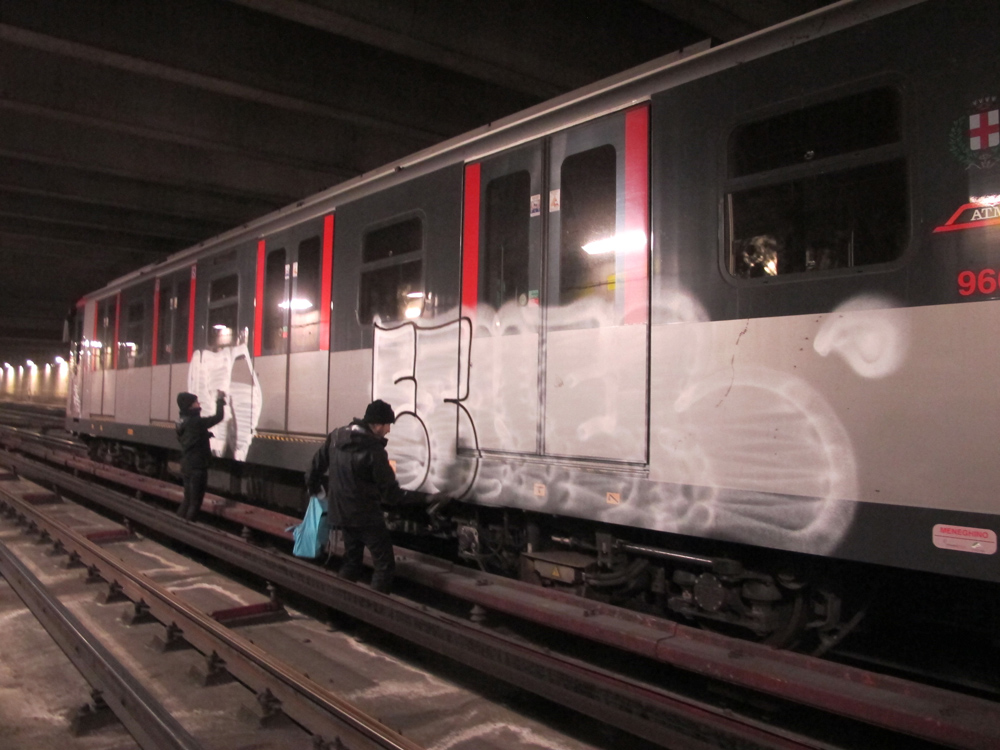
UTAH & ETHER – RIDE (2013) from utah ether on Vimeo.
What do you find fascinating about trains?
There are so many things that are appealing about trains and metro in general, and especially in reference to graffiti. First off, aesthetically, they are the most interesting surface for us to paint. Unlike a wall, which is more or less visually the same anywhere in the world, each train and metro model is specific to the city it runs in. For us, there’s just a special allure to painting something that is decidedly representative of a particular city. Something that maybe you have to travel long and far to paint, and that not just anyone, anywhere, can walk out their front door and paint any time they feel like it.
Also, the experience itself of painting trains and metro is quite special to us. Each system and each spot is unique, and as such, figuring out how to paint each system and each spot (bypassing sensors, avoiding cameras and security, etc.) requires a skill set far beyond simply knowing how to use a can of spray paint. The act of cutting a fence or breaking into an airshaft is equally (and oftentimes more) rewarding for us than the actual finished product of graffiti.
Perhaps the most intriguing thing about painting transit though is the fact that trains and metro are what connects a city to its inhabitants. The majority of people in almost any given city rely on public transportation daily, to get them to and from wherever they need to go. So to have our graffiti running in traffic (even if only for a short time), and seen by all those who are riding the system allows us the opportunity to interact with the general population. In this way, painting the metro is extremely public, as thousands of people will see our work, and it’s reaching a mass audience. But in another way it’s quite intimate, as we become a part of the daily routine of each individual person who sees our work rolling by, and our work affects each person in a different way (whether they love it or hate it, or are somewhere in-between). We feel it’s an interesting juxtaposition.
What makes you want to continue to paint?
We have dedicated so much of our time and our life to graffiti that to stop painting isn’t something we ever really think about. We obviously love what we do, but even beyond that, it’s more or less a part of our daily routine, like how most people drink a cup of coffee every morning. That’s not to imply that it’s easy or fun all the time, because it isn’t. But then what is? There are definitely those times sitting in a police precinct or hiding in a bush at 4 in the morning, where we’re like, “Why are we doing this again?” But even at its worst, it’s still more enjoyable than almost anything else we can think of. We do admit though that in the past year our motivation has shifted somewhat. Whereas before we were driven solely by seeing our name everywhere, we are now equally motivated to use illegal graffiti as a medium to explore certain concepts and ideas that are of interest to us.
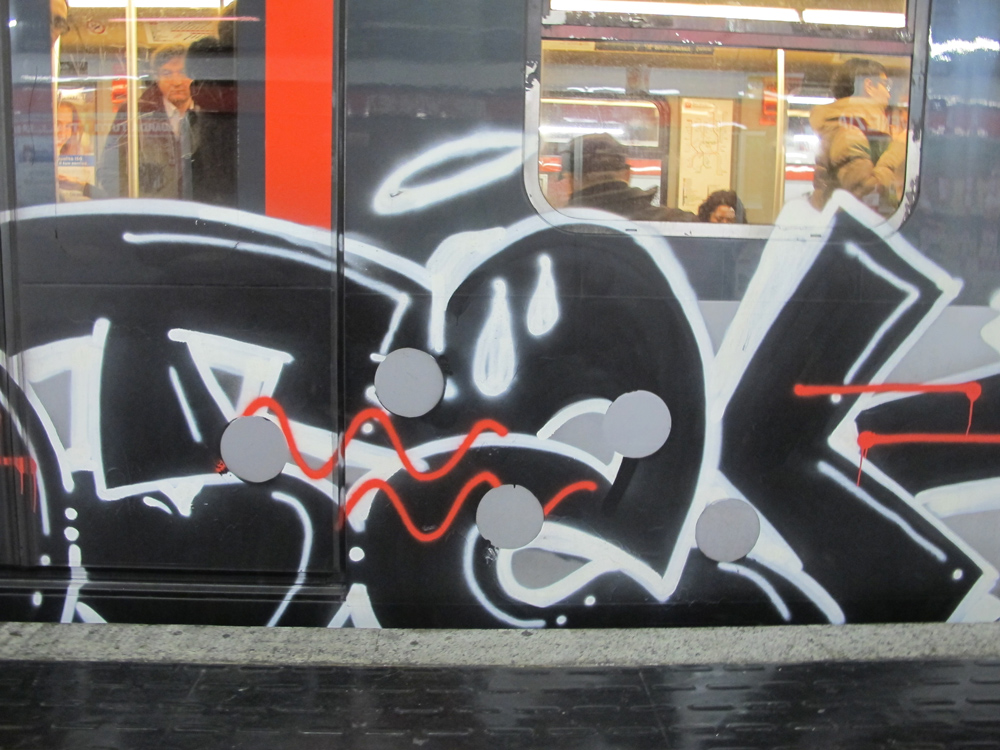
Do you think that what you guys do is more genuine than what a lot of other writers do these days?
We don’t really like to compare ourselves to others. The older we get the more we realize it’s a waste of time and energy. We’re content just to focus on ourselves and our progress as artists.
That being said, we suppose one thing that is particular to us that could be considered genuine, as you put it, is that we’re extremely adamant about being self-reliant and self-sufficient.
Certainly not all, but most writers today, seem to be dependent on others to get their graffiti done. We have received countless emails and messages over the years from total strangers asking us how to paint a specific metro system we’ve painted, wanting information on where to buy paint in a foreign city we’ve been to, etc. Most of the cities we travel to, we go alone and paint alone. We make a habit of not meeting people strictly for the purpose of painting, so unless someone is a good friend or comes with a high recommendation from a good friend, we prefer just to keep to ourselves. We traveled in Asia for about three years, and everywhere we went we painted the metro without contact with any local writers. We figured out where to sleep, eat, get paint and whatever else we needed all on our own.
You guys have done something really interesting with your past exhibitions, by showing pieces of work that were created illegally rather than painting a canvas in your studio and hanging it on a wall and passing it off as “graffiti art.” Why was it important for you to show work that was created illegally in a gallery setting? What do you want the viewer to think about or understand when seeing this?
For us, the most important aspect of graffiti is it’s illegality, and the vitality and energy that’s inherent to illegal graffiti. If we were to use a gallery setting to showcase the type of “graffiti art” you mentioned, which simply copies what we do in the street on a canvas, we feel the end result would lose all of its meaning. It would be boring to both the viewer and to us.
With our art, we hope to create a dialogue with our audience and to challenge their conventional viewpoints concerning graffiti, whether it’s concepts of public versus private property, or the blurred lines of what constitutes as legal and illegal, etc. We find the best way to do this is to create our art in authentic environments, outside of the safety of a traditional studio. We have never been studio artists. For over 15 years we have remained active within graffiti on an illegal level, so we find it only natural that our art would be an extension of this.
As for what the viewer takes away from our artwork, we don’t have one particular idea or agenda we’re trying to impose upon anyone. Obviously, the specific concepts behind the works vary from series to series, but all of our works ask questions that hopefully push the viewer to be more than just another passive onlooker at another gallery show. Whatever answers the viewer might come up with to the questions raised by our art are up to them.
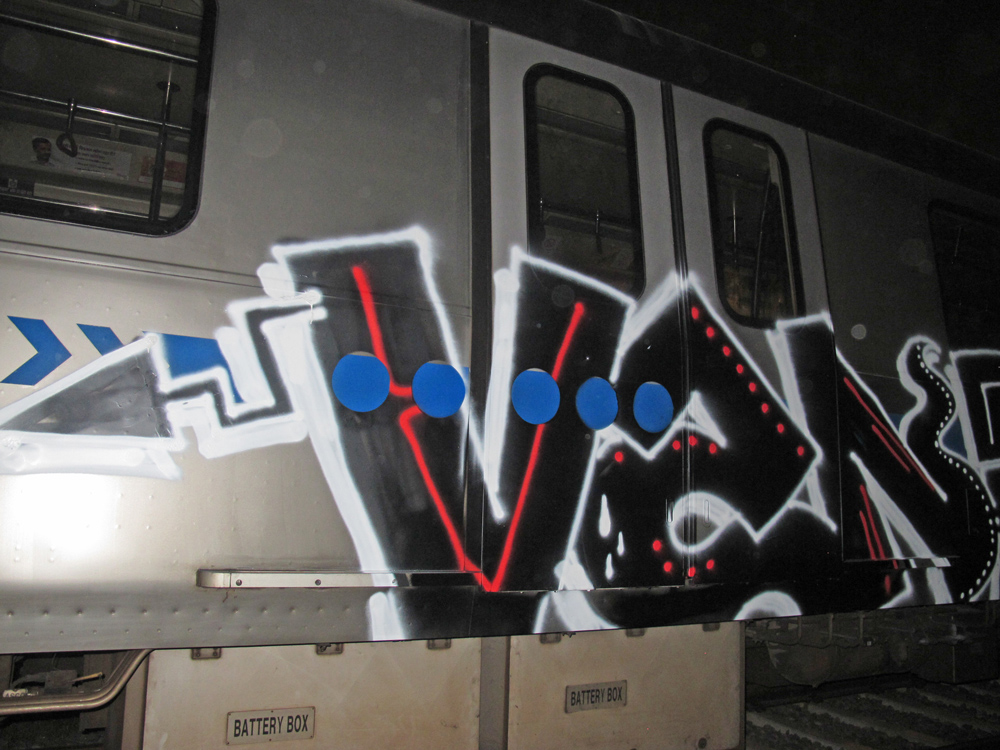
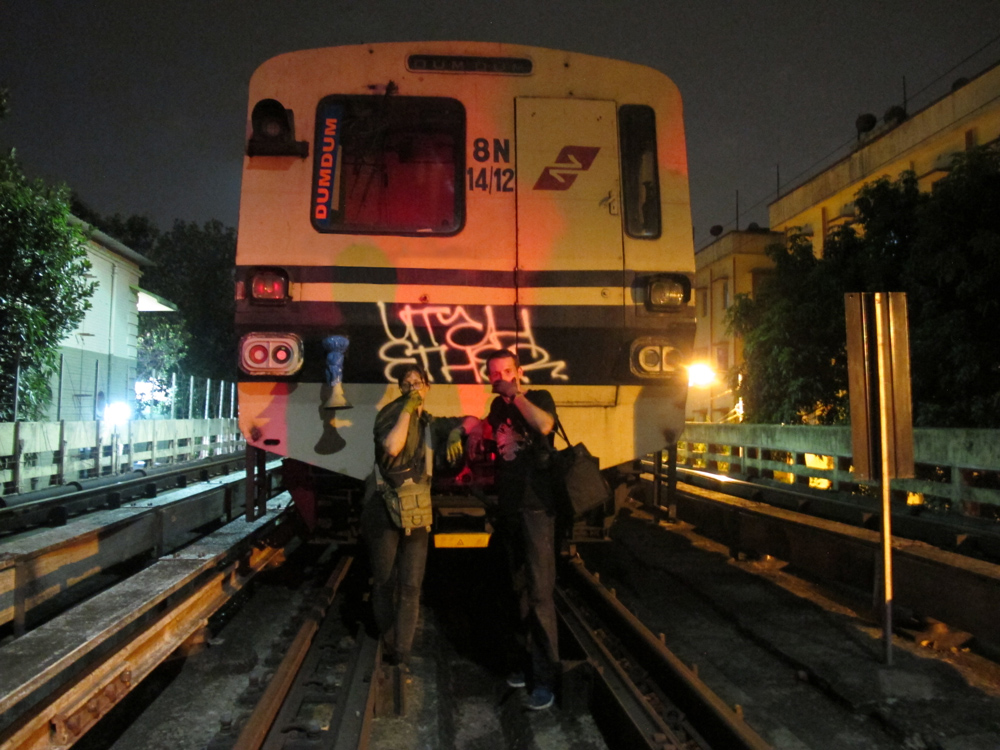
In Kolkata, India 2015. Photo by Nokier.
Tell me a little bit about your recent book Finish InterRail.
Finish InterRail is a book we put out with Trespass Press. They had approached us a while back to collaborate on a publication, and we thought it could be interesting, as we hadn’t put out a zine or book in a while. Of course, we knew that we wanted to showcase our graffiti and photography, but beyond that we had no idea of the specifics of what we wanted the book to focus on. When we decided to go on InterRail last spring we figured it would be perfect to center the book around that. InterRail, for those who aren’t from Europe and aren’t familiar with the term, is a ticket that allows you to freely travel by train within almost all European countries for a specified amount of days. We both had 30-day passes, so we figured it would be the perfect opportunity to travel, paint, and take a bunch of fun photos for this book with Trespass. We decided we would use only disposable cameras on this travel, for aesthetic reasons, and also because they were quite easy to take from a supermarket very near to where we were living at the time. We had a big InterRail travel planned, starting in Barcelona and Madrid, and moving through France all the way to Eastern Europe.
So our plans were set and everything should have gone fine, except that the entire trip turned into a total disaster on the first day. On our way to Spain our InterRail tickets were taken from us by a ticket checker under the presumption that they were “invalid.” We arrived in Barcelona to finish up a project we had been working on out there, only to find that in our absence a girl who’d been assisting us on the project had ended up misusing most of the paint that was allotted for the project and even stealing some of it. She lied to the paint company who donated the supplies and to us about it for months, and even ended up canceling the project without informing us. So basically, we showed up to finish a project and there was no project left to finish. We were so overwhelmed by the negative turn of things that we left on a bus for Marseille ASAP. We had no InterRail ticket to travel with and by this time our itinerary was totally off course. So we decided that while we sorted out new travel arrangements, we would just chill in Marseille and paint as much as we could as kind of a countermeasure against all of the stress and drama that had gone on recently. We had actually been to Marseille back in 2008 for a very short visit. We didn’t like it at all at the time, so at first we weren’t too thrilled at the prospect of being stuck there. However, this time around we were really able to spend time exploring and getting to know the city, and it totally changed our opinion of Marseille. We ended up documenting our 10 days in the city, and we were really happy with the results. We felt that the idea of this InterRail-gone-wrong-gone-right-again was more interesting and honest than the perfect spraycation we had originally set out on, and so we decided to base our book around the 10 days we spent in Marseille.
For the book we also collaborated with Trespass Press on a limited-edition box set that, along with the book, includes an undeveloped disposable camera that we used on an InterRail, a T-Shirt we designed featuring the InterRail ticket pattern, and an interactive artist print of an InterRail ticket with a QR Code that allows whoever scans it to view raw, unreleased footage of metro actions from a previous InterRail travel of ours. In the past, we’ve self-published books and zines, so this time it was important to us to create something a bit different than we had before, something that people could interact with somehow. It was really nice to be able to work with a company who was vested in helping us develop and realize the ideas we had.
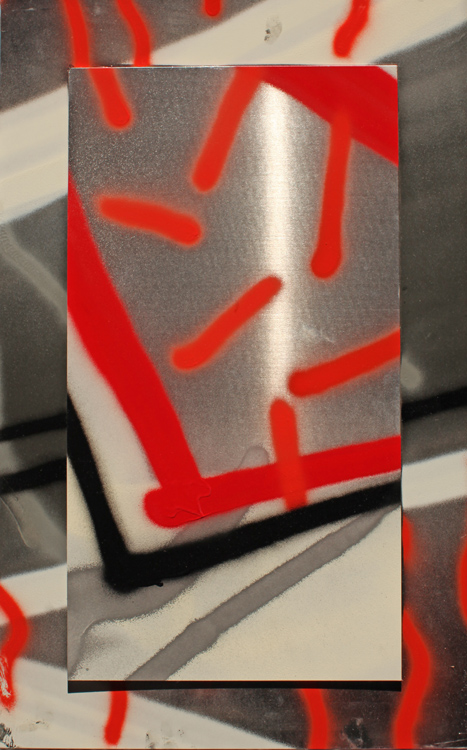
What are your goals for 2015? What do you have planned?
Oh gosh, we have so many things planned for this year. Right now, we are wrapping up editing footage and photos for the upcoming Probation Vacation: Lost in Asia. It is going to be a book and video project chronicling traveling and painting over 30 metro systems in Asia. It’s been a massive job sorting through almost three years of video and images and shaping it into something cohesive, but we are really proud of how it has turned out so far, and we hope to have it released by the summer. We have another book we are working on that is more focused on our artwork, and we have an exhibition we are preparing for later this year. We don’t want to say too much about it yet as it’s all still in the early stages, but we will post the information on our website as the date draws closer. We also have quite a few travels planned, just to paint and have fun, so who knows, maybe you’ll see our names rolling up to a train station in your city sometime soon…
What is your best piece of advice?
In the end, there are no real shortcuts in this game, at least not in the long run. There is no pot of gold at the end of the graffiti rainbow, and no one’s coming home with the graffiti Grammy. Either you paint or you don’t. It’s really that simple. We guess you could say that about anything in life though. Work hard and stay focused. Perhaps it sounds a bit cliché and boring, but it’s the truth.
::
Follow Utah & Ether at utahether.com and their Instagram @utah_ether.

